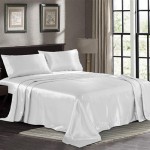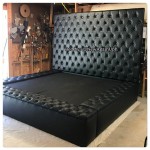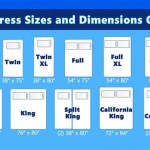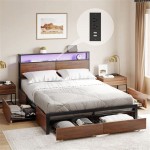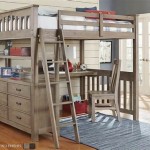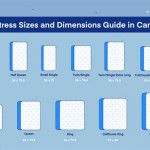Queen Size Beds and Bedframes: A Comprehensive Guide
The queen size bed and bedframe combination represents a prevalent choice for individuals and couples seeking a balance between space efficiency and sleeping comfort. This standard bed size offers a noticeable upgrade in sleeping area compared to a full-size bed, while remaining more manageable in smaller spaces than king or California king options. Understanding the nuances of queen size beds and bedframes is crucial for selecting the optimal sleep solution that caters to individual needs and preferences.
The dimensions of a standard queen size mattress measure 60 inches in width and 80 inches in length. This translates to ample room for single sleepers to spread out comfortably and provides sufficient space for two adults to sleep relatively closely. However, it is important to consider the individual sleeping styles and body sizes of potential sleepers when evaluating its suitability. For individuals who toss and turn frequently or prefer a greater degree of personal space, a king size bed might prove a more comfortable long-term investment.
Choosing the appropriate bedframe for a queen size mattress is equally important as selecting the mattress itself. The bedframe provides structural support and contributes significantly to the overall aesthetic of the bedroom. Bedframes are available in a wide array of styles, materials, and functional features. The selection process should take into account factors such as budgetary constraints, design preferences, and the desired level of practicality and convenience.
Understanding Bedframe Types and Materials
Bedframes broadly fall into several distinct categories, each offering its own set of advantages and disadvantages. Platform beds, for example, provide a solid, level surface for the mattress, often eliminating the need for a box spring. They are typically constructed from wood or metal and are characterized by their minimalist design. Platform beds can be a contemporary option, suitable for modern and minimalist bedroom aesthetics.
Panel beds, another popular choice, feature a headboard, footboard, and side rails that form a frame around the mattress. These beds often require a box spring for proper mattress support. Panel beds are versatile in terms of style, ranging from traditional to modern designs, and can be crafted from various materials, including wood, upholstered fabric, and metal. The overall look of a panel bed can significantly influence the ambiance of the bedroom.
Storage beds incorporate drawers or compartments beneath the mattress platform, providing valuable space-saving solutions, particularly beneficial in smaller apartments or homes with limited closet space. These beds can be either platform-style or panel-style, and the storage configurations can vary widely. Storage beds offer a practical way to declutter the bedroom and maximize usable space.
Upholstered bedframes feature fabric covering the headboard, footboard, and/or side rails. The fabrics used can range from velvet and linen to leather and synthetic materials. Upholstered beds provide a soft, luxurious aesthetic and can add a touch of elegance to the bedroom. They are often chosen for their comfort and visual appeal.
Metal bedframes, constructed primarily from steel or iron, are renowned for their durability and affordability. They tend to be lightweight and easy to assemble. Metal bedframes generally offer a more industrial or minimalist aesthetic and are suitable for various bedroom styles. Their robust construction ensures long-lasting support for the mattress.
Regarding materials, solid wood bedframes provide durability and a timeless aesthetic. Different wood types, such as oak, maple, and pine, offer varying degrees of hardness and grain patterns, impacting the overall appearance and longevity. Solid wood options are often considered a high-quality investment that can withstand years of use.
Engineered wood, such as plywood or particleboard, is a more affordable alternative to solid wood. While less durable than solid wood, engineered wood can still provide adequate support and can be finished to mimic the appearance of solid wood. Engineered wood is often used in bedframes with complex designs or intricate details. Veneers can also be used to enhance the look of these materials.
Factors to Consider When Choosing a Queen Size Bed and Bedframe
When selecting a queen size bed and bedframe, several key factors should be taken into consideration to ensure a comfortable and aesthetically pleasing sleep environment. The size of the bedroom is a primary consideration. Although a queen size bed is generally smaller than a king, it still requires sufficient space to allow for comfortable movement around the bed and the placement of other furniture. It is crucial to measure the room dimensions and map out the furniture arrangement to avoid overcrowding.
The mattress type and its compatibility with the chosen bedframe is another vital aspect. Different mattress types, such as memory foam, innerspring, and hybrid mattresses, have varying support requirements. Some bedframes, like those with widely spaced slats, may not provide adequate support for certain mattress types, potentially leading to premature sagging or wear. Ensuring that the bedframe is designed to properly support the chosen mattress is vital for maintaining its longevity and ensuring optimal comfort.
The sleeper's individual needs and preferences play a crucial role in the selection process. Factors such as sleeping position, body weight, and any existing health conditions should be considered. For example, individuals with back pain may benefit from a firmer mattress and a supportive bedframe, while side sleepers may prefer a softer mattress and a bedframe with a lower profile. Considering these specific needs ensures a sleep experience that caters to individual comfort and promotes restful sleep.
Budgetary constraints are inevitably a significant factor in the decision-making process. Queen size beds and bedframes are available across a wide price range, from affordable options to luxury models. Establishing a clear budget before commencing the search can help narrow down the available options and prevent overspending. It is essential to balance the desire for quality and comfort with budgetary limitations.
The overall aesthetic of the bedroom should also be taken into account. The bed and bedframe should complement the existing décor and contribute to the desired ambiance. Considering the style, color, and materials of the bedframe can help create a cohesive and visually appealing bedroom design. The bed serves as a focal point in the room, its design largely dictating the room's style.
Maintaining and Caring for a Queen Size Bed and Bedframe
Proper maintenance and care are essential for extending the lifespan of a queen size bed and bedframe and ensuring a clean and hygienic sleep environment. Regularly cleaning the mattress and bedframe is crucial for removing dust, allergens, and potential stains. Vacuuming the mattress regularly can help prevent the buildup of dust mites and other allergens.
Protecting the mattress with a mattress protector is highly recommended. A mattress protector acts as a barrier against spills, stains, and allergens, extending the lifespan of the mattress and preventing damage. It is a relatively inexpensive investment that can significantly prolong the usability of the mattress. Some mattress protectors are also waterproof, providing an additional layer of defense against accidents.
Periodically tightening the screws and bolts on the bedframe can prevent wobbling and instability. Over time, the vibrations and movements of everyday use can cause the hardware to loosen. Regularly checking and tightening the hardware ensures that the bedframe remains structurally sound and stable. This simple maintenance task can significantly extend the lifespan of the bedframe.
Rotating or flipping the mattress periodically can help prevent uneven wear and tear. This practice distributes the weight more evenly across the mattress surface, preventing sagging and prolonging its lifespan. The frequency of rotation or flipping depends on the mattress type and manufacturer's recommendations. Following these recommendations can maximize comfort and prevent premature wear.
Addressing any stains or spills promptly is essential for preventing permanent damage to the mattress and bedframe. Using appropriate cleaning solutions and techniques for the specific material can help remove stains effectively. Avoiding harsh chemicals and abrasive cleaners is crucial to prevent damage to the fabric or finish. Consulting the manufacturer's instructions for cleaning and care is always advisable.
In conclusion, The selection of a queen-size bed and frame requires careful consideration of numerous factors, including bedroom size, material preference, and price point, to ensure a good night's sleep.

Chatelet Teak Wood Bed Frame 2 Sizes Queen King Option Mattress

1 Ashton Solid Wood Queen Size Bed Picket Rail Custom Sofas Furniture

Tella Modern Platform Bed Frame

Antoine Wood Bed Frame Solid Oak

Leuven Japanese Bed Frame Tatami Solid Wood Engineered 3 Sizes Small Double Queen King Option Mattress Table

Combo Pull Out Bed

Bretton Teak Platform Bed Frame Queen

Tokyo Japanese Platform Bedframe Double Bed None

1 Ashton Solid Wood Queen Size Bed Picket Rail Custom Sofas Furniture
Luna Tatami Headboard Storage Drawers Bedframe Single To Queen Size

